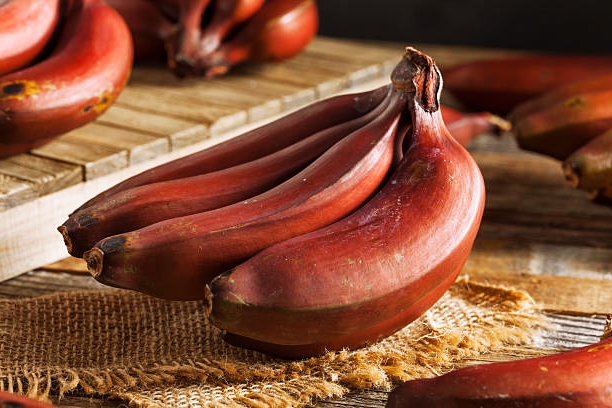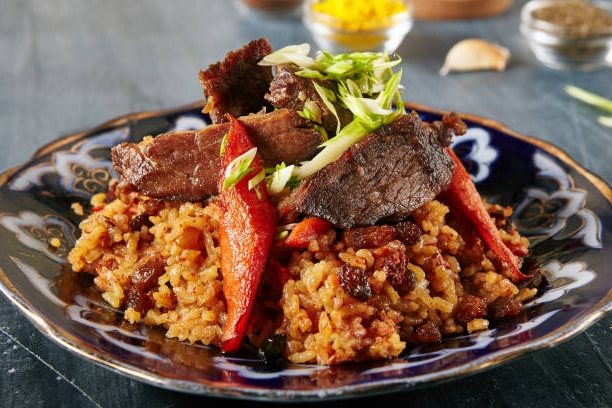Different Types of Bananas in the World
Bananas are one of the most popular and nutritious fruits consumed around the world. With various types to choose from, there is something to suit everyone’s taste. Not only are they delicious, but they also offer a range of health benefits for those that include them in their diet. This post will provide an overview of the different types of bananas, their nutritional content, health benefits, uses and preparations, storage tips, possible health risks, cultivation, availability, and environmental impact.
Table of Contents
Overview of Bananas
Bananas are a popular and nutrient-dense fruit that provides a range of health benefits. They are a rich source of potassium, magnesium, dietary fiber, vitamin C, manganese, and B vitamins. Bananas are also low in fat and sodium, making them a healthy snack for people of all ages.

They can be eaten raw or cooked in a variety of dishes and they make a great addition to smoothies and other drinks. Bananas are also great for baking and their sweetness adds a unique flavor to many desserts. Bananas are a versatile fruit that can be enjoyed in many different ways, making them a great choice for anyone looking for a healthy snack.
Types of Bananas
Bananas are a popular fruit worldwide, with countless varieties available for consumption. Each type of banana has its own unique flavor, texture, and appearance. The most common types of bananas are Cavendish, Lady Finger, Saba, and Red Dacca. Cavendish bananas are the most widely available and have a sweet, creamy taste. Lady Finger bananas are sweet and have a unique, slender shape. Saba bananas have a starchy taste, with a hint of sweetness, and are often used in cooking. Red Dacca bananas are extremely sweet and have a reddish-pink hue. Each type of banana has its own unique characteristics, making them popular for a variety of uses.
Nutritional Content of Bananas
Bananas are a nutritional powerhouse, packed with essential vitamins and minerals. A single banana can provide you with 14 percent of your daily requirement of vitamin B6, 18 percent of your daily requirement of vitamin C, and 12 percent of your daily requirement of dietary fiber. Additionally, bananas are a great source of magnesium, potassium, manganese, and copper. They contain antioxidants and have a low glycemic index, helping to control blood sugar levels. Bananas are also a great source of energy and can be easily incorporated into a variety of meals and snacks.
Health Benefits of Bananas
Bananas are a nutritional powerhouse, offering a variety of health benefits. They are an excellent source of potassium and vitamins B6 and C, as well as dietary fiber. Bananas are known to reduce the risk of heart disease and stroke, aid in digestion and weight management, and help keep blood sugar levels balanced. In addition, bananas are a good source of magnesium and can help to reduce stress and fatigue. Eating a banana daily can help provide essential nutrients and may even improve mental clarity. Bananas are a versatile, convenient, and tasty snack that can fit into any diet.
Uses and Preparations of Bananas
Bananas are a popular fruit throughout the world, with their sweet flavor and versatility making them a favorite snack. Bananas are used in a variety of recipes and preparations, from smoothies and ice cream dishes to savory dishes like curries and stir-fries. Bananas are also used in baking, such as in banana bread and muffins, or enjoyed raw as a healthy snack. In addition to their culinary uses, bananas can be used medicinally as a natural remedy for digestive issues and as a source of vitamins and minerals. Bananas are also high in fiber, which can help to keep you feeling full for longer. Bananas are an excellent addition to any diet, offering a range of health benefits and culinary possibilities.
Storage Tips for Bananas
Bananas are a nutritious and delicious snack, but proper storage is key for preserving their quality and taste. While refrigeration is not necessary, storing them at room temperature will ensure that they ripen evenly. For best results, keep them away from other fruits and vegetables, as they can speed up the ripening process. Additionally, it is important to keep the bananas out of direct sunlight, as this can cause them to become overly ripe or discolored. If you need to store them for an extended period of time, placing them in a paper bag can help them retain their flavor and texture. By following these simple storage tips, you can enjoy your bananas for a longer period of time.
Possible Health Risks of Bananas
Bananas are a nutritious and convenient snack that are full of essential vitamins and minerals, making them a great choice for an on-the-go snack. However, there are potential health risks associated with eating too many bananas. Too many bananas can cause an electrolyte imbalance, due to their high levels of potassium. Eating too many bananas can also cause bloating and gas, as well as a feeling of fullness. Additionally, bananas can cause digestive discomfort if eaten on an empty stomach, due to their high fiber content. It is important to be aware of these possible health risks and to only consume bananas in moderation.
Cultivation of Bananas
Bananas are one of the most widely-cultivated and consumed fruits in the world. They are easy to grow and have a high yield, making them an ideal crop for farmers to cultivate. Growing bananas requires a warm, humid climate and plenty of sunlight. Bananas grow best in tropical and subtropical regions with ample rainfall. Before planting, it is important to prepare the soil by adding compost or other organic matter to promote drainage.
Bananas require frequent watering during the growing season, especially during periods of drought. Fertilizing with a balanced fertilizer is essential for optimal growth. Bananas can be harvested when the fruit is ripe, usually about 6 to 9 months after planting. Proper harvesting and post-harvest handling will help to extend the shelf life of the fruit. By carefully cultivating bananas, farmers can ensure a bountiful harvest for many years to come.
Availability of Different Types of Bananas
Bananas are a popular and versatile fruit that can be enjoyed in a variety of ways. They are available in many different types, including Cavendish, Lady Finger, Plantain, and Red Dacca. Each type of banana has its own unique flavor, texture, and nutritional content. Cavendish bananas are the most widely available and are typically found in grocery stores.
Lady Finger bananas are longer and sweeter than Cavendish bananas, and they are commonly used for baking. Plantains are starchier and firmer than other types of bananas, and they are often used in savory dishes. Red Dacca bananas are an uncommon variety that is small and fragrant, and they are often used in desserts. No matter which type of banana you choose, be sure to select those that are ripe, unblemished, and free of bruises.
Environmental Impact of Bananas
The environmental impact of bananas is a complex issue due to the large scale of production and the numerous environmental issues associated with it. Bananas are a major staple food crop and are grown in tropical and subtropical regions around the world. The cultivation of bananas can have a detrimental effect on the environment due to the large amount of water needed for irrigation, the use of chemical fertilizers, and the destruction of natural habitats.
Bananas also require large amounts of land for cultivation, which can lead to deforestation and loss of biodiversity. Additionally, the use of chemical pesticides and fungicides can pollute water bodies and contaminate soil, leading to serious health risks for humans and wildlife. Finally, the transport and distribution of bananas requires the use of fuel, contributing to air pollution and climate change. In order to reduce the environmental impact of bananas, sustainable farming practices and the reduction of chemical inputs should be encouraged.
In conclusion, bananas are a popular fruit around the world due to their unique taste, nutritional content, health benefits, and versatility. There are numerous types, each with its own characteristics, flavors, and uses. Nutritional content and health benefits vary depending on the type of banana and its ripeness. Additionally, bananas are easy to store and transport, making them an accessible and affordable food.
Although there are some potential health risks associated with excessive consumption of bananas, they still remain an excellent source of nutrition. Additionally, the environmental impact of bananas production is relatively low compared to other agricultural crops. All these aspects make bananas a great and versatile addition to any diet.



